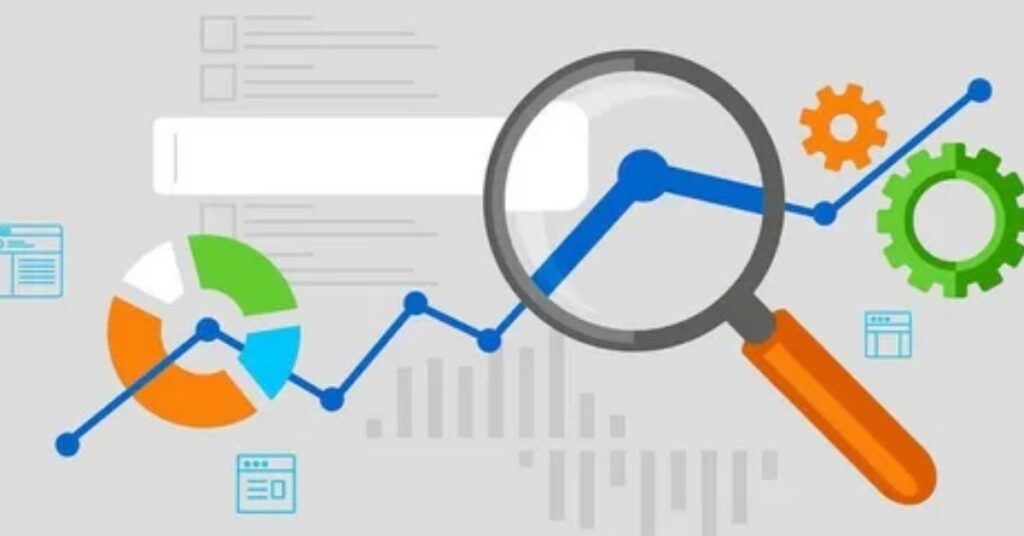Enter Client Pulse 2024 – a game-changing methodology that empowers organizations to proactively gather, analyze, and act upon customer feedback in real-time. Here a question arises ‘’ Get Ready Bell: Mastering the Art of Client Pulse 2024’’.
This comprehensive guide will unlock the secrets to understanding and enhancing Client Pulse, providing you with a roadmap to sustainable growth and unparalleled customer experiences.
What is Client Pulse?

Client Pulse is a cutting-edge approach that transforms conventional customer interactions into a continuous loop of insights. It’s a dynamic process that enables businesses to tap into the heartbeat of their client base, anticipating evolving demands and delivering exceptional experiences consistently.
At its core, Client Pulse revolves around actively soliciting, meticulously analyzing, and swiftly responding to customer feedback. It’s a paradigm shift from reactive to proactive customer service, empowering companies to stay ahead of the curve and foster lasting relationships built on trust and satisfaction.
Also Read This: Elon Musk May Ban Apple Devices Over ChatGPT Integration
The Importance of Client Pulse in 2024

In the era of heightened customer expectations, keeping your finger on the pulse of client sentiments is non-negotiable. Here’s why Client Pulse will be a make-or-break factor in 2024:
Retain Customers
Retaining existing customers is far more cost-effective than acquiring new ones. By tapping into the Client Pulse, you can identify pain points, address concerns promptly, and foster lasting relationships built on trust and satisfaction. According to a study by Bain & Company, a 5% increase in customer retention can boost profits by a staggering 25% to 95%.
Increase Revenue
Satisfied customers are more likely to become brand advocates, driving referrals and repeat business. Client Pulse helps you anticipate their needs, deliver personalized experiences, and maximize customer lifetime value. A Temkin Group study revealed that companies with excellent customer experience capabilities can charge a premium of up to 16% over their competitors.
Improve Products/Services
Continuous feedback serves as a roadmap for innovation. Client Pulse unveils opportunities to refine your offerings, staying ahead of the curve and meeting evolving market demands. According to a McKinsey report, companies that prioritize customer experience are 60% more profitable than their competitors.
How Client Pulse Works
The magic behind Client Pulse lies in its ability to capture and interpret customer sentiments accurately. Here’s a glimpse into its inner workings:
Data Collection Methods
Client Pulse leverages a multitude of channels to gather feedback, including:
- Surveys: Targeted questionnaires tailored to specific touchpoints or customer segments.
- Social Media Monitoring: Tracking and analyzing brand mentions, reviews, and conversations across social platforms.
- Review Platforms: Monitoring customer reviews on sites like Yelp, Google, and industry-specific platforms.
- Direct Interactions: Capturing feedback during customer service interactions, sales calls, or in-person engagements.
The key is to meet customers where they are, ensuring a seamless and convenient experience.
Analysis and Reporting
Cutting-edge analytics tools transform raw data into actionable insights. Sophisticated algorithms identify patterns, sentiments, and trends, presenting them in user-friendly dashboards for swift decision-making. Advanced natural language processing (NLP) techniques can even decipher qualitative feedback, uncovering nuances and hidden insights.
Key Metrics to Track

While Client Pulse offers a wealth of data, certain metrics stand out as critical indicators of customer health. Here are the three you can’t afford to overlook:
Net Promoter Score (NPS)
This powerful metric gauge’s customer loyalty and advocacy. By measuring the likelihood of recommending your brand, NPS provides a clear snapshot of customer sentiment and potential for growth through word-of-mouth. Companies with high NPS scores tend to outperform their competitors in terms of revenue growth and profitability.
Customer Satisfaction (CSAT)
Simple yet effective, CSAT measures how well your products or services meet customer expectations. Monitoring CSAT trends can pinpoint areas for improvement and highlight your strengths. According to a Gartner study, businesses with high CSAT scores enjoy a staggering 20% increase in customer retention rates.
Customer Effort Score (CES)
In today’s fast-paced world, convenience is king. CES quantifies the ease of doing business with your company, illuminating friction points in the customer journey that may hinder loyalty. A Harvard Business Review study found that reducing customer effort is the key to maximizing customer value and loyalty.
Strategies to Improve Client Pulse
Merely collecting data is just the first step. To truly harness the power of Client Pulse, you’ll need to implement strategies that drive continuous improvement:
Close the Feedback Loop
Respond promptly to customer feedback, addressing concerns and showcasing your commitment to their experience. This builds trust and reinforces a culture of active listening. According to a Salesforce report, 78% of customers are willing to forgive a company for a mistake if they receive excellent service in resolving the issue.
Empower Customer-facing Teams
Equip your frontline employees with the tools, training, and autonomy to address customer needs in real-time. They are your brand ambassadors, and their actions directly shape the Client Pulse. A Gallup study revealed that companies with highly engaged employees experience a 10% increase in customer loyalty ratings.
Implement Changes Proactively
Don’t wait for issues to escalate. Use the insights gained from Client Pulse to proactively identify areas for improvement and implement changes that enhance the customer experience before it’s too late. A Forrester study found that companies that prioritize customer experience see a 5.1% increase in revenue growth compared to their competitors.
Also Read This: Cryptonewzhub.com Internet Introducing the Next Frontier
Best Practices
To maximize the impact of your Client Pulse initiatives, follow these best practices:
Make it Easy to Provide Feedback
Reduce friction by offering multiple convenient channels for customers to share their thoughts. Seamless experiences breed higher participation rates and richer insights. According to a Dimensional Research study, 62% of customers are more likely to provide feedback if the process is simple and straightforward.
Personalize the Experience
Tailor your interactions based on individual preferences and past behaviors. Personalization fosters a sense of being heard and valued, strengthening the customer-brand bond. A McKinsey study revealed that personalized experiences can drive revenue growth of 5% to 15% and increase marketing spend efficiency by 10% to 30%.
Encourage Positivity
While addressing concerns is crucial, don’t overlook the importance of celebrating wins. Highlight positive feedback, reinforce your strengths, and foster a culture of gratitude. A Temkin Group study found that companies that prioritize positive experiences see a 16% increase in customer loyalty.
Success Stories and Case Studies
Companies across industries have reaped the rewards of implementing Client Pulse strategies. From retail giants streamlining their supply chains to SaaS providers enhancing user experiences, the impact has been transformative.
Take, for example, Zappos, the online shoe and clothing retailer. By placing a strong emphasis on customer feedback and actively addressing concerns, they’ve cultivated a loyal following and achieved an impressive NPS score of 92%.
Another notable success story is Slack, the popular collaboration platform. By closely monitoring user feedback and rapidly iterating on their product, they’ve consistently maintained a high CSAT score and a loyal user base, leading to their acquisition by Salesforce for a staggering $27.7 billion.
Measuring ROI of Client Pulse
Quantifying the return on investment (ROI) of your Client Pulse initiatives is essential to justify resource allocation and continuous improvement. Key metrics to track include:
- Customer Retention Rates: Measuring the impact of Client Pulse on reducing customer churn and increasing loyalty.
- Revenue Growth: Tracking the direct impact of improved customer experiences on sales and revenue streams.
- Cost Savings: Identifying efficiencies and process optimizations driven by customer feedback, leading to cost reductions.
- Value of Prevented Churn: Calculating the revenue and customer lifetime value preserved by addressing and resolving potential customer defections.
Future of Client Pulse

As technology continues to evolve, so too will the Client Pulse landscape. Expect to see advancements in:
- Predictive Analytics: Leveraging machine learning and AI to anticipate customer needs and proactively address potential issues before they arise.
- Real-time Sentiment Analysis: Advanced natural language processing (NLP) techniques to instantly analyze customer feedback across various channels, enabling immediate action and personalized responses.
- Omnichannel Integration: Seamless integration of feedback channels, ensuring a consistent and cohesive experience for customers across multiple touchpoints, including social media, messaging apps, and voice assistants.
- Augmented and Virtual Reality: Immersive experiences for gathering feedback, enabling customers to provide input in more intuitive and engaging ways.
- Internet of Things (IoT): Connected devices and sensors collecting real-time usage data, providing valuable insights into customer behavior and preferences.
Conclusion
In the age of hyper-connected consumers, businesses that prioritize Client Pulse will emerge as leaders. By fostering a culture of active listening, continuous improvement, and customer-centricity, you can future-proof your organization and thrive in an ever-changing market.
Frequently Asked Questions
How often should I collect customer feedback?
The frequency depends on your industry and customer touchpoints, but a general rule is to solicit feedback after every significant interaction, such as a purchase, service call, or product update.
Can Client Pulse replace traditional market research?
No, Client Pulse complements traditional market research by providing real-time, continuous insights into your existing customer base. It should be used in conjunction with broader market studies for a comprehensive understanding of industry trends, competitor analysis, and potential new customer segments.
How can I ensure the accuracy of customer feedback?
Implement measures to verify the authenticity of feedback sources, encourage honest and constructive responses, and cross-reference data from multiple channels.
What if I receive negative feedback?
Negative feedback is an opportunity for improvement. Respond promptly, address the issue transparently, and use the insights to enhance your offerings or processes.
How can I get started with Client Pulse?
Begin by auditing your current feedback channels and identifying gaps. Invest in robust analytics tools, train your teams on customer-centric practices, and establish clear processes for acting on insights.
Also Read This: Thesparkshop.in: Product Batman Style Wireless Bt Earbuds

As the admin of techtasion.com, I bring over 4 years of expertise in SEO and guest blogging. My passion lies in optimizing online presence and creating impactful guest posts. Dedicated to driving growth and delivering value through strategic digital content.
Pingback: The Ultimate Guide to SOUJIYI – Unleashing the Power of Cleanliness